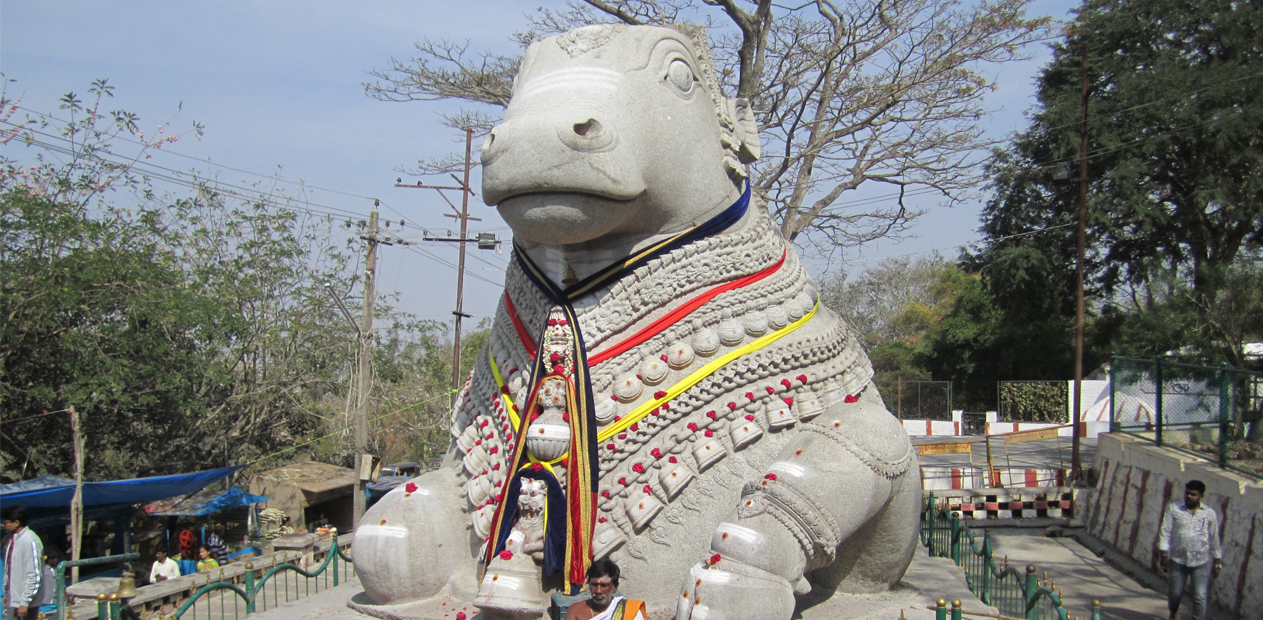Tamilnadu, Kerala, Karnataka, Goa Tour | 30 Days and 29 Nights


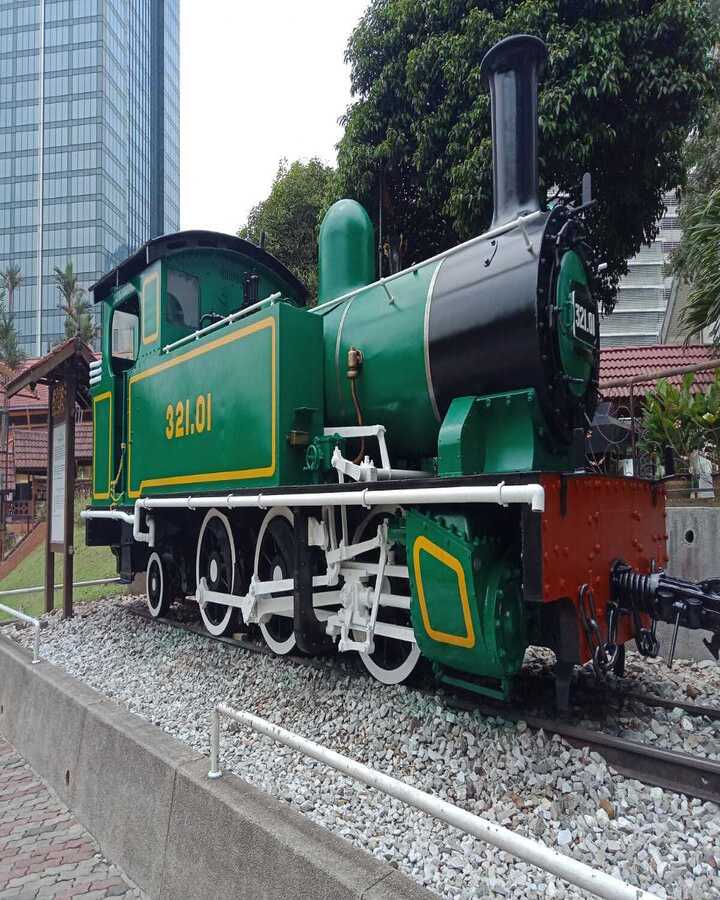
Including : Mahabalipuram, Kanchipuram, Auroville, Pondicherry, Chidambaram, Gangaikondacholapuram, Darasuram, Thanjavur, Trichy, Madurai, Thekkady, Munnar, Alleppey Backwaters , Kochi, Nilgiri Mountain Toy Train, Ooty, Bandipur National Park, Mysore, Shravanabelagola, Hassan, Belur, Halebidu, Hampi, Bijapur, Aihole, Pattadakal, Badami, Goa
Airports: Arrival Chennai, Departure Goa
Day 1: Travel to Mahabalipuram after arrival at Chennai International Airport
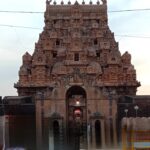

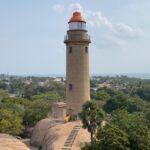
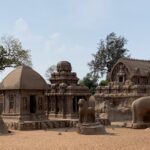
Your driver will pick you up at the airport and deliver you to your hotel in Mahabalipuram. The rest of the day is free for leisure activities. Mahabalipuram is located on the Bay of Bengal shore. The best beach in India’s east is regarded to be its magnificent beach. The palm trees and typical fishing boats add to the blue sea and sandy beach’s hue.
Spend the night in Mahabalipuram
Day 2: Kanchipuram and Mahabalipuram




Kanchipuram, often known as the “golden city of a thousand temples,” is one of India’s seven holiest cities according to Hinduism. After Varanasi, it is regarded as being the second holiest. Between the sixth and eighth centuries AD, it served as the capital city for illustrious Dravidian empires like the Pallavas, Cholas, and Vijayanagar. Out of the original 1000 temples, just about 70 remain intact. The Kailasanatha temple, a sandstone structure constructed in the early 7th century A.D., is the most well-known of them. Silk weaving is a specialty of the town of Kanchipuram, and visiting adjacent villages to observe the craftsmen at work is highly appealing.
Evening – Return move to Mahabalipuram
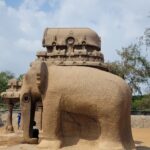

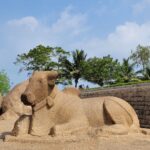
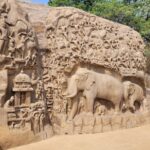
Mahalipuram’s collection of monuments is a UNESCO World Heritage Site. On a rocky outcrop between a beach and a lagoon, it is situated in a beautiful area. The complex, which was constructed by the Pallava kings in the seventh century, consists of 14 cave temples, 9 monolithic “Rathas,” 3 stone temples, and 2 relief-carved rock panels. The two rock panels, which together make up the largest bass relief in the world, provide graphic details of Arjun’s penance when he prayed for Shiva’s abilities. There is particular attention to the Shore Temple. It is constructed next to the river and features an unusual altar that faces east so that it may catch the dawn sun.
Spend the night in Mahabalipuram
Day 3: Travel to Auroville as well as Pondicherry

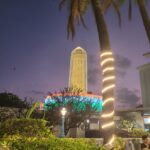
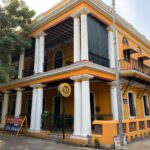
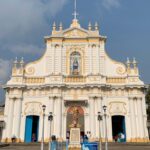
Up to 50,000 people from all over the world are expected to live in the universal township of Auroville, which is dedicated to an experiment in fostering human togetherness. In the 1930s, “The Mother,” Mirra Alfassa, was introduced to the idea of Auroville. She offers a blessing to the Sri Aurobindo Society of Pondicherry’s idea to establish such a township in the middle of the 1960s. The Indian government endorsed the idea, and in 1966 UNESCO unanimously approved a resolution praising Auroville as a project crucial to the advancement of humanity.
Today, Auroville is acknowledged as the first and only continuous experiment in human unity-in-diversity and consciousness evolution that has received international endorsement. It is interested in sustainable living and the long-term cultural, environmental, social, and spiritual requirements of humanity. It also does practical research in these areas.
Spend the night in Pondicherry.
Day 4: Full day in Pondicherry
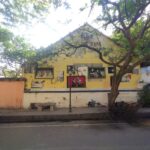

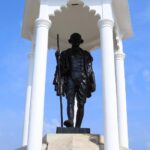
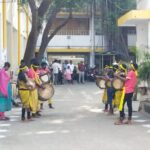
François Martin, the first director of the French East India Company, founded Pondicherry in 1674, the former capital of the French colonies in India. The town is organized on a grid, with parallel streets intersecting at right angles. Elegant colonial mansions, tree-lined boulevards, parks, bars, and cafes may all be found in the French Quarter. Its principal promenade, the 3 km long Goubert Salai that runs alongside the Bay of Bengal, makes for a cool nighttime stroll or daytime stroll. A canal that originally divided the French Quarter from the Tamil section of the city, where the locals used to reside, is now dry. Manakula Vinayagar Temple is a well-known destination for tourists and pilgrims.
Spend the night in Pondicherry.
Day 5: Travel to Thanjavur en route visit Chidambaram, Gangaikondacholapuram, Darasuram
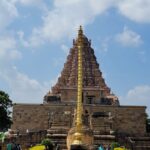
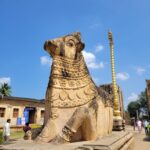
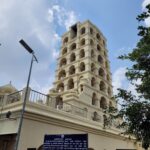
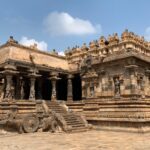
Visit Chidambaram, Gangaikondacholapuram and Darasuram along the way.
In the center of Chidambaram, a town known for its temples sits the Hindu shrine, Chidambaram Temple. One of the most well-known depictions of Lord Shiva performing his sacred dance (the “nadanta”) is the Nataraja, the “Cosmic Dancer,” whose spectacular gopurams, themselves are examples of Dravidian architecture, provide access to the sanctuary. The town of the Chola who brought Ganga (water from Ganga) or who vanquished (the rulers near) Ganga” is what Gangaikondacholapuram implies.
The city was built in the eleventh century to serve as the seat of the mighty Chola Dynasty, but it is now just a little village. The temple is a UNESCO World Heritage site renowned for its brilliant architecture and profusion of sculptures. Shiva, who is referred to in this region as the “Lord of Airavata,” is honored at the Airavateshvara Temple in Darasuram. According to legend, after worshipping Shiva here, Airavata, the white elephant of Indra, the deity of the skies, regained his color. The temple is a piece of world heritage listed by UNESCO.
Spend the night in Thanjavur
Day 6: Full day in Thanjavur
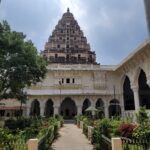

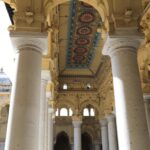
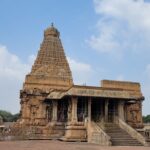
Visits to the Maratha Palace, Brihadeshwara Temple, and other locations are planned for today in Thanjavur.
The Chola rulers, whose ancestors date back to the beginning of the Christian period and who founded their kingdom between AD850 and 1270, had Thanjavur as their historic capital. They ruled the majority of the Indian peninsula, including sections of Sri Lanka and, for a brief period, the Srivijaya Kingdom of the Malay peninsula and Sumatra, at their zenith of strength. The Brihadeshwara Temple was built by Raja Raja (985–1014), one of the finest Chola rulers, and his son Rajendra I (1014–1044), whose navy fought the Arabs for control of the Indian Ocean trade routes.
The Cholas also contributed to the massive temple complex at Srirangam in Thiruchirappalli and built the temples at Thiruvaiyaru, Gangakondacholapuram, and Darasuram (Trichy). One of India’s largest temples and one of its most cherished architectural landmarks, the Brihadeshwara Temple is a UNESCO World Heritage site. You might catch a glimpse of an elephant blessing ritual. The huge Maratha Palace was created by the Nayaks and improved by the Marathas. A museum, an art gallery, and a manuscript library are all located within the royal complex.
Spend the night in Thanjavur.
Day 7: Travel to Tiruchirappalli (Trichy) as well as Madurai
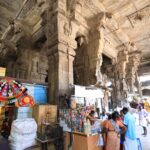
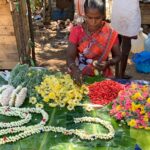
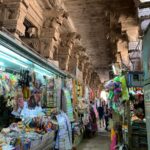
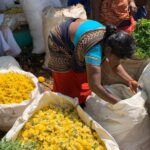
Trichy, the fourth-largest city in Tamil Nadu, is located on the Cauvery River’s banks. It was an early Cholas stronghold that was eventually conquered by the Pallavas. Built around the Rock Fort, Trichy is an excellent fusion of heritage and modernity. Along with the fort, there are a number of 1760s-era churches, institutions, and missions. The Nayaks of Madurai really built the town and its fort. Great Tamil scholars who made a significant impact on Tamil literature have come from this city. The Rock Fort Temple, a magnificent monument located on a gigantic rocky outcrop that rises abruptly from the plain to loom above the ancient city, is the most well-known landmark of this bustling town. During the British-French conflict for control of India in the 18th century, it was one of the major hubs around which the Carnatic Wars were fought. Tamil Nadu city is a booming commercial hub and is well-known for its fake jewels, cigars, handloom clothing, glass bangles, and wooden and clay toys.
You can even decide to trek to the top of Rock Fort to witness the Ganesh temple Ucchi Pillayar Koil, which was built there in the seventh century. On the ascent, there are other rock-cut temples. There are only about 340 steps left after your driver takes you halfway up. The vista is breathtaking, with Trichy extending all around and eagles circling below. Near Trichy, on an islet created by the twin rivers Cauvery and Coleroon, is the Srirangam Temple. The 156-acre complex where the massive temple is located contains seven enclosures, thick rampart walls, majestic towers, and a unique hall with 1000 pillars. The temple itself is vast in size. This temple is devoted to Ranganatha, a reclining manifestation of the Hindu deity Vishnu. It is the first of Lord Vishnu’s eight self-manifested shrines and is regarded as the most significant of the 108 primary Vishnu temples.
Then drive to Madurai from Trichy.
Spend the night in Madurai.
Day 8: Full day in Madurai
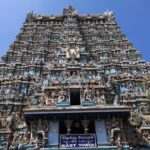
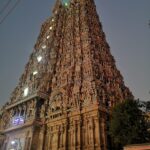
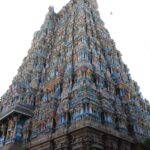
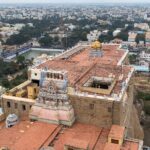
One of the rare Hindu female goddesses to have a significant temple devoted to her is the Hindu goddess Parvati, the consort of Lord Shiva, who is honored in the Meenakshi Amman Temple. The temple is one of the biggest temple complexes in Tamil Nadu and the geographic and ceremonial center of Madurai. A multitude of concentric quadrangular enclosures surrounded by tall brick walls makes up the vast temple complex. It has spectacular gopurams, shrines, a holy tank, and a number of rooms, including one with a thousand pillars. The temple comes under the list of top 30 candidates for the “New Seven Wonders of the World”.
Just across from the Meenakshi lies the Pudu Mandapam, a 17th-century temple that has been transformed into an indoor market. Visit the Tirumala Nayak Palace afterward. King Thirumalai Nayak built this 17th-century palace in 1636 AD. The Palace is a beautiful structure that beautifully blends Islamic and Dravidian architectural elements. It is renowned for the stucco work on its domes and arches.
Spend the night in Madurai.
Day 9: Travel to Munnar
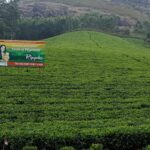

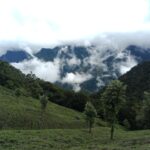
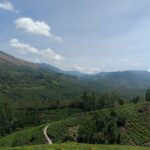
A scenic journey through the tea plantation and hills of Munnar.
The scenic village in the western Ghats of Kerala is surrounded by hills dotted with former palaces of the British Raj elite and tea plantations established in the late 19th century.
Confluence of three rivers, people belongings to three religions and tea plantations are the attraction factors.
Eravikulam National Park is home to the endangered Nilgiri Tahr.
Spend the night in Munnar
Day 10: Full day in Munnar
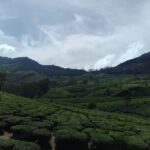
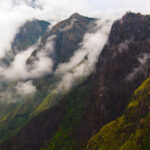
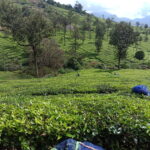
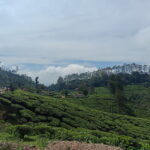
The Western Ghats’ distinctive sweeping high-altitude grasslands stand in stark contrast to the lowlands’ shoals or tropical forests. They are a distinctive feature of the mountainous region. The Eravikulam National Park, located at the foot of the Anaimudi Mountain and covering an area of 97 square kilometers, is the best-conserved portion of this breathtakingly gorgeous terrain. This summit holds the distinction of being the tallest peak south of the Himalayas, rising to a height of 2,695 meters. The summit and its surroundings make for good trekking terrain.
The park, which is located on the boundary of the states of Kerala and Tamil Nadu, was created in 1978 with the express purpose of preserving the critically endangered Nilgiri Tahr mountain goat. Approximately 3,000 tahrs live in the park now, making it the only place in the world where you may find this slate-gray goat. It lives on the rocky slopes and is unexpectedly visible up close. It is extremely nimble. In addition, the park is home to endangered Indian wild dogs called dhole packs, macaques, and leopards. The renowned kurunji, the blue flowers that unexpectedly blossom in large numbers every 12 years and turn the rocky landscape into a sea of blue, will be visible to lucky visitors.
You could opt to take a panoramic tour of the area or go to the nearby market and tea plantations
Spend the night in Munnar.
Day 11: Travel to Thekkady

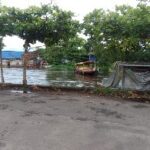
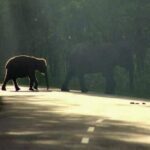
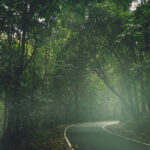
Thekkady is a small town near Periyar Tiger Reserve, a major tourist destination in Kerala and the name Thekkady is derived from the word teak as it is home to an abundance of teak trees. Eighty percent of the world’s cardamom is produced in this area at an altitude of one thousand five hundred feet above sea level.
You will visit a spice plantation after checking into your hotel so that you can learn more about the various spices growing there. The spice plantation can be explored later on an elephant safari.
In the evening you can visit the spice market through Kumali town, Jeep safari, Kathakali dance show and Elephant riding center are in the vicinity of Thekkady.
Spend the night in Thekkady
Day 12: Full day in Thekkady
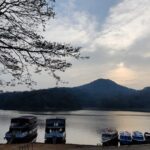
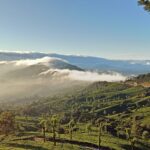
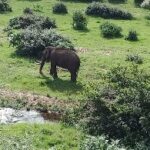
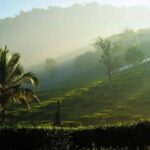
You will be taken on a three-hour hike into the forest in the morning, where you will get the chance to witness wild creatures, birds, butterflies, and beautiful scenery.
You can take a 2-hour boat tour on the Periyar lake in the afternoon to see wild creatures.
In the evening you can visit the spice market through Kumali town, jeep safari, Kathakali dance show and Elephant riding center are in the vicinity of Thekkady
Spend the night in Thekkady.
Day 13: Travel to Alleppey Backwaters
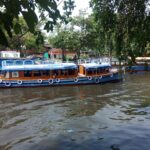
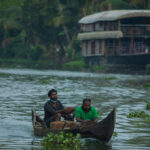
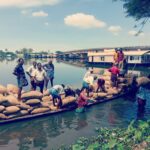
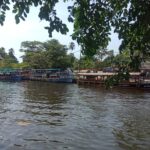
Check out from the hotel and transfer to Alleppey. When nature is all you need to recuperate, the backwaters are undoubtedly the most invigorating, fascinating paradise in Kerala , God’s own country. The slender coconut palms standing here, there and everywhere, it’s never ending paddy fields, meandering lagoons and backwaters, Upon arrival check into houseboat, just relax at the boat. it will be a unique and exclusive experience in your lifetime. You will be cruising along the village sides and paddy fields witnessing the core life of Kerala villages.
Spend a night in Houseboat
Day 14: Travel to Kochi
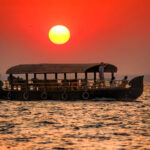
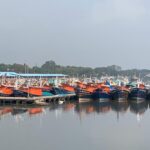
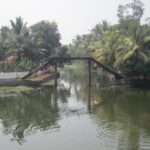
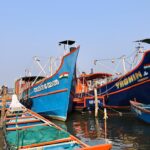
When you arrive in Kochi, you will be driven to the hotel, which is located in the old Fort Kochi neighborhood. You can stroll or unwind in the hotel. You could like to take a sunset sail in the evening. You will be transported to Kochi Harbour for this, where you can also see the harbor’s vibrant activity and the Chinese fishing nets. You can plan to watch the evening Kathakali dance performance.
Spend the night in Kochi.
Day 15: Full-day in Kochi
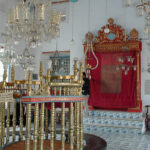
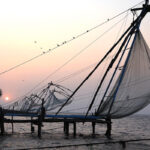
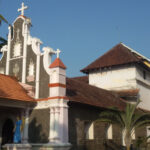

Kochi is Kerala’s most cosmopolitan city. It is also its main trading center for spices and seafood. Built around a saltwater lagoon of the Arabian Sea, Kochi is in fact a collection of narrow islands and peninsulas. While mainland Eranakulam boasts of concrete shopping malls and glitzy apartment buildings, Mattancherry and Fort Kochi have an old-world charm, with their blend of Dutch, Portuguese, and English bungalows and quaint narrow streets. The scenic location of Kochi’s natural harbor, surrounded by palm groves, green fields, inland lakes, and backwaters, has enchanted visitors from across the globe for centuries.
You might choose a stroll to take in the atmosphere, to shop, or to visit, for example, Jew Town and its synagogue, the Dutch Palace, Saint Francis Church, and the Dutch graveyard.
Spend the night in Kochi.
Day 16: Travel to Coonoor to get the Nilgiri Mountain Toy Train to Ooty


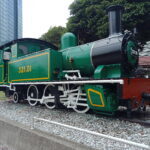
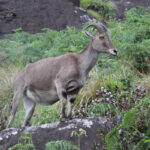
The renowned Nilgiri Mountain Toy Train will transport you to Coonoor from Ooty Railway Station. At 16.30 pm, the train departs with its own aura. The Nilgiri Valley may be seen on one side of the hour-long voyage, and the hills can be seen on the other. Your driver will meet you at the train station in Ooty after transporting your bags there by car. The British constructed the railway so they could access the Ooty mountain region’s cooler air during the summer. The rack and pinion system is used by the steam locomotive to climb gradients.
Spend the night in Ooty
Day 17: Travel to Bandipur National Park after visiting Ooty
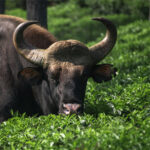
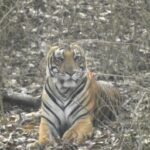

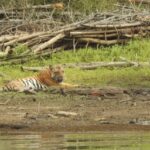
You will witness View Point and the tea estates while in Ooty. The magnificent “Hill Road” will next lead you to Bandipur National Park, where you’ll arrive and be in the care of wildlife experts until late the following morning. Lunch is included in the afternoon program, which also includes a 3-hour jeep safari with a guide to see wild animals. Then relax before dinner followed by a movie about wild animals. This is an open-air, untamed jungle park. It is hard to predict what you will see on a safari because it is not a zoo. Although the majority of visitors focus on animals including monkeys, elephants, deer, boars, antelopes, reptiles, bison, birds, flowers, butterflies, plants, and trees. A leopard, bear, or even a tiger might be spotted by fortunate tourists. Remember to bring your camera.
Bandipur National park, nestled in Karnataka’s Chamarajanagar district is one of India’s most celebrated wildlife reserves. Spanning over 1,450 square kilometers. It forms part of the Nilgiri Biosphere Reserve and has been a designated tiger reserve since 1973 under Project Tiger. The park is home to a remarkable range of wildlife, including tigers, elephants, deer and a variety of bird species. Conveniently accessible by road from Bengaluru and Mysuru, bandipur offers a perfect blend of forest beauty and thrilling safari experiences for nature lovers.
Spend the night in Bandipur
Day 18: Travel to Mysore


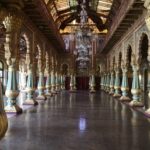
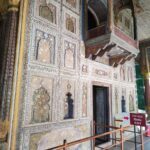
Nagarhole National Park, nestled in the lush landscape of Karnataka, is renowned for its biodiversity and scenic beauty. The southeastern part of the park, especially during summer, offers exceptional opportunities for wildlife spotting. Adjacent to the Kabini Reservoir, visitors can explore 55 acres of dense forest, sleep valleys and serene water bodies. Historically, this region was a favored hunting ground for the Maharajas of Mysore, British viceroys and Indian royalty. Today, Nagarhole is surrounded by the Kabini forest and seamlessly connected to other natural attractions such as Tholpetty Wildlife Sanctuary, Kuruva Island, sagar Dam, and Wayanad, making it a must visit destination for nature lovers and wildlife enthusiasts. If you have booked a jeep safari to explore the wildlife you will continue your safaris into the Nagarhole National Park with the help of local guides.
Brunch is followed in the morning by a second, 3-hour jeep safari as the adventure at the Bandipur continues. You’ll depart for Mysore in the late morning. Your driver will take you on a nighttime driving tour of Mysore’s landmarks, including a stop at the renowned Devaraja fruit and vegetable market.
Spend the night in Mysore
Day 19: Full-day in Mysore
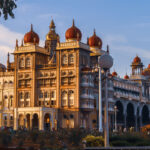
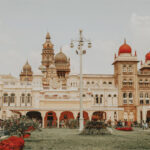
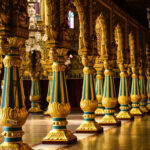
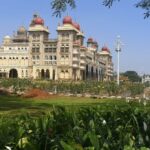
Mysore is a captivating city that is renowned for its ostentatious festival celebrations. Since 400 years ago, Dusshera has been a highly anticipated holiday that draws large crowds to see the spectacular celebrations. Mysore was the capital of the Wadiyar Hindu dynasty skirted by wooded hills and situated among fertile fields. It ruled southern Karnataka from 1399 to 1947, except for the 38-year rule of the Muslim warlord Haider Ali and his son, Tipu Sultan, in the 18th century.
Ashtanga Yoga is a style of yoga that synchronizes the breath with a variety of postures, and it is very popular in the city. Additionally, it is renowned for its fine sandalwood and silk products. The city has a lot of things to offer for all tourists with a wide variety of sightseeing locations, including exotic palaces and beautiful gardens. With our expertly designed same-day Mysore tour, you can discover the allure of the city.
The visits would also constitute the Chamundi Hill, Amba Vilas Palace, the Cathedral of Saint Philomena, the enormous crouching Nandi, Lalitha Mahal Palace, the residence of Sultan Tippu, Krishnaraja Circle, and Srirangapattana. You can even enjoy going to the nearby Ranganthittu Bird Sanctuary, depending on the weather and the season.
Spend the night in Mysore
Day 20: Travel to Shravanbelagola as well as Hassan
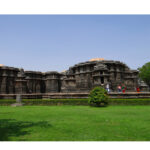
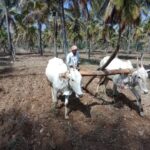
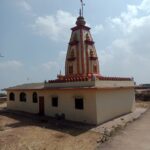
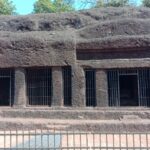
Shravanabelagola is a small city located between two granite hills, Indragiri and Chandragiri, on its famous White Pond. It is South India’s most important Jain site. It is dominated by a massive monolithic statue of Gommateshvara, also known as Bahubali, the son of the first Jain Tirthankara, standing 17.7m tall. The statue of the naked savior stands on an anthill on the summit of the very tall Indragiri Hill, staring impassively ahead. Creepers are entwined around his legs and arms, indicating how long he stood immobile in meditation. An inscription at the base records Chamundaraya, the powerful minister of Rajamalla IV, one of the Ganga kings, and the consecration of the temple in AD981.
Following the visit, you will drive to Hassan.
Spend the night in Hassan.
Day 21: Full day in Belur, Halebidu and return move to Hassan
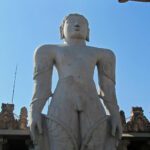
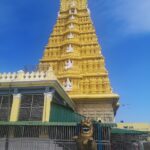
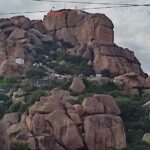
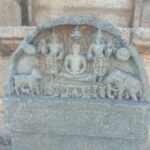
Among the wonders of South Indian art and architecture are the temples built by the Hoysala kings (12th–13th centuries) and their skillful ministers. They represent the union of the columned mandapas of the South with the curved towers (shikhara) of North India. They stand out for their distinctive star-shaped plan and their lavish surface ornamentation. The Chennakeshva Temple in Belur is renowned for its shrine, pillars, and sculptures. King Vishnuvardhan erected it in 1117 to honor the Hoysalas’ victory over the Cholas.
The Vijayanagar king built a towered gopura in the 16th century that serves as the temple’s entrance. Some of the finest and most impressive examples of Hoysala architecture can be found in Halebidu. A tourist’s paradise, Hoysaleshvara Temple boasts exquisite pillars and sculptures. King Vishnuvardhana began construction on the structure in 1121, and it took ten years to complete. Its structure consists of a pair of identical Shiva temples. Depending on the amount of time available, the Kedareshwara Temple in Halebidu is a lesser-known tourist destination but is still worthwhile a quick visit.
Spend the night in Hassan
Day 22: Travel to Hampi
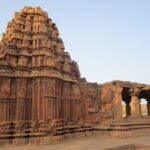
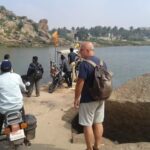
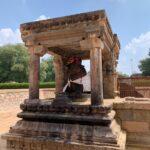
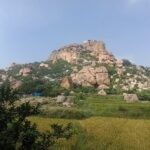
Hampi the UNCESCO recognized World Heritage site located by the Tungabhadra River surrounded by 500 ancient monuments, beautiful temples, bustling street markets, bastions, treasury buildings and captivating remains of Vijayanagar Empire, it was a fortified city. Chronicles left by Persian and European travellers, particularly the Portuguese, says that hindu Virupaksha temple, near the revived Hampi Bazar. A carved stone chariot stands in front of the huge Vittala Temple site. Southeast of Hampi, daroji Bear sanctuary is home to the India sloth bear.
Spend the night in Hampi
Day 23: The first full day in Hampi

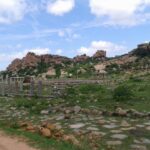
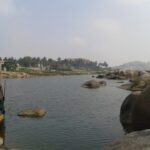
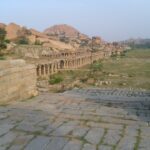
On the southern bank of the Tungabhadra River, Hampi, a UNESCO World Heritage Site, is home to the spectacular ruins of Vijayanagar, the “City of Victory.” For more than 200 years, Hampi served as the capital of three generations of Hindu emperors. Under Krishnadeva Raya and Achyuta Raya, Hampi was at its height. It still serves as a significant religious hub. The site includes the royal and holy centers. It is on a great site, with granite boulders and rugged ridges serving as natural defenses. The view is magnificent. The sacred center of the city was guarded by a fortified urban core that was divided from it by an irrigated valley through which still-existing canals and rivers once ran.
The Krishna Temple, Virupaksha Temple, King’s Balance, Elephant Stables, Lotus Mahal, Queen’s Bath, Mahanavami Platform, Stepped Tank, and Narasimha Monolith are among the places that will be visited.
Spend the night in Hampi.
Day 24: Second Full day in Hampi
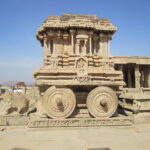
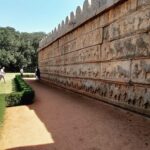
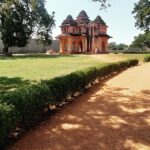

The Vitthala Temple, the largest of all the religious structures in the sacred center, stands as the pinnacle of Vijayanagar art and construction. Although its creator is still unknown, two of Vijayanagar’s finest emperors, Krishnadeva Raya and Achyuta Raya, expanded it in the 16th century. The large open hall, or mahamandapa, which is erected on a low platform and supported by elaborately carved pillars, is located before the main shrine. 11 years before the city was captured and abandoned, in 1554, a military commander gave this as a gift.
Spend the night in Hampi.
Day 25: Travel to Bijapur (Vijayapura)

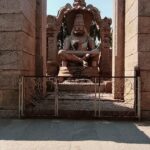

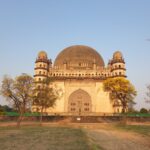
After breakfast, drive to Bijapur which is a well-known city for its historical monuments of
architectural importance constructed during the rule of the Adil Shahi dynasty. On the way,
there are a lot many to enjoy and view. You can make your trip to Bijapur really exciting.
Day 26: Full day in Bijapur (Vijayapura)
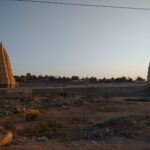
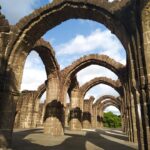
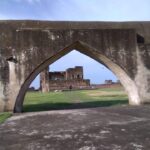
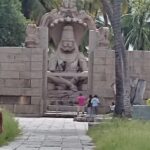
After breakfast, visit Gol Gumbaz, the mausoleum of Muhammad Adil Shah known for its amazing dimensions and unique acoustic features. Jamia Masjid, built by Adil Shah in 1578 is one of the largest mosques in South India. Ibrahim Roza, the tomb of Ibrahim Adil Shah II (ruled 1580-1627), the fifth king of the
dynasty. These are the attractions which you can actually relish there. By evening, return to the hotel .
spend the night in Bijapur
Day 27: Travel to Badami en route visit Aihole Pattadakal

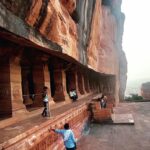
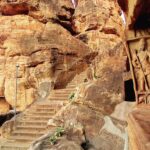

With roughly 125 stone temples that date back to the fifth century, Aihole is renowned for its Chalukyan architecture. The Durga temple is the biggest and best, and it’s also the most peculiar because of its apsidal sanctuary and open colonnade. The temple is perched atop a high plinth, and steps at one end lead to a portico that is adorned with intricate carvings of seductive guardians and couples on its columns. The niches lining the colonnade contain further works of sculpture, including those of Durga, Harihara, Narasimha, Vishnu with Garuda, and Shiva with Nandi. In contrast, the sanctuary’s circular plinth and the inside of the hall are both unadorned. The name of the temple is misleading because it no longer contains the image that was formerly worshipped there.
A UNESCO World Heritage site is Pattadakal. The Malprabha riverbanks are a lovely location for its holy complex. The magnificent structures from the eighth century serve as a suitable capstone to the Chalukya Kings’ artistic accomplishments. Both Nagara and Dravidian temple architecture may be seen in the town.
After your visit, you’ll go on to Badami via car.
Spend the night in Badami.
Day 28: Travel to Badami Cave Temple before heading Goa

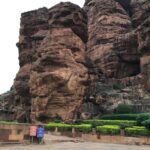
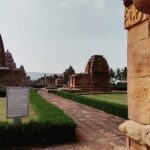

You will visit Badami, which has magnificent Cave Temples. The mighty Chalukya rulers who controlled the Deccan throughout the sixth and seventh centuries had Badami as their royal city. This old town is renowned for its rock-cut and structural relics. It is dramatically set within a horseshoe of red sandstone cliffs, overlooking the serene green waters of the sizable Agastya lake. The intricately adorned Cave Temples, which are carved into the cliff and each have a different deity as a patron—Shiva, Vishnu, or Jain Saints—are there.
You will travel to Goa following the visit.
Spend the night in Goa.
Day 29: Full day in Goa

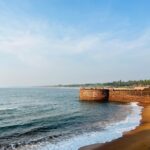
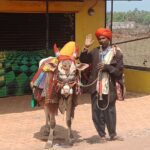
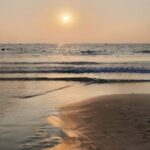
Goa is a little state on the Konkan Coast that is less than 4 square kilometers. Goa’s unique culture is a result of colonial rule in the region. Alfonso de Albuquerque founded a little but potent Portuguese colony here in 1510. Goa joined the Indian Union in 1961, but the people’s attire, language, religion, and food nevertheless reflect centuries of Portuguese control. They also incorporate a blend of the wistful fado and the melodic rhythms of regional Konkani folk melodies in their music. The picturesque beaches, luxuriant paddy fields, coconut plantations, and opulent homes of Goa are well-known. The beautiful churches and Hindu temples are further attractions. The welcoming, laid-back people of Goa go above and beyond to make guests feel good.
The beach, a river tour, Reis Magos with its fort and church, the Anjuna Beach flea market (only on Wednesdays), the Bom Jesus Basilica, and some of the other outstanding religious structures can all be included in your itinerary.
We advise you to see the Bom Jesus Basilica, which is regarded as one of India’s finest specimens of baroque architecture and is a UNESCO World Heritage Site. Because it contains Francis Xavier, the patron saint of Goa, in his earthly form, it is highly regarded by Roman Catholics everywhere.
Spend the night in Goa.
Day 30: Travel and drop off to Goa International Airport
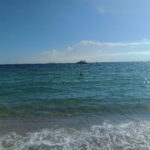
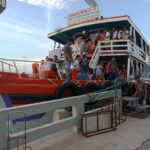

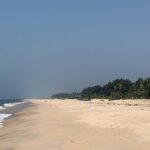
The things you do today will depend on how much time you have before your trip. The majority of our visitors decide to relax at the hotel.
Before your return flight, you will be transported to Goa International Airport.


-
Departure/Return Location
Chennai international airport -
Departure Time
Goa airport -
Included
AC Vehicle -
Not Included
Auto RikshaBikeEntrance fees to the selected venuesHouse Boat RentKerala LunchProfessional GuideTea and Snacks
Tour Plan
Tour Plan
Tour Location

